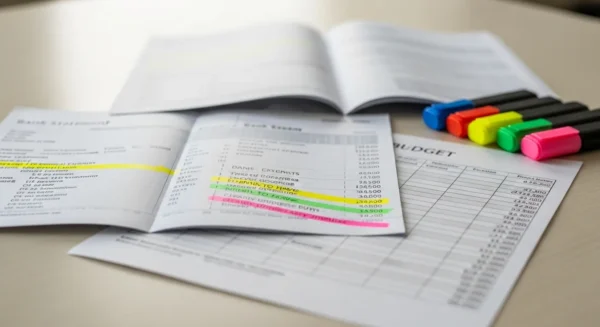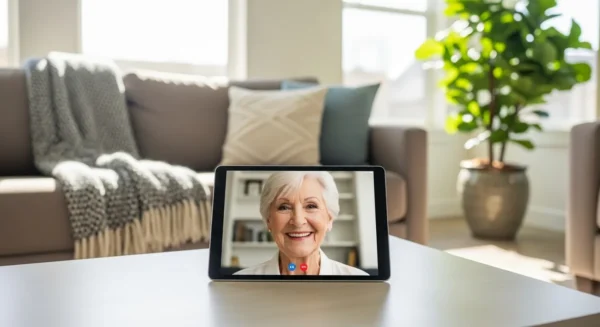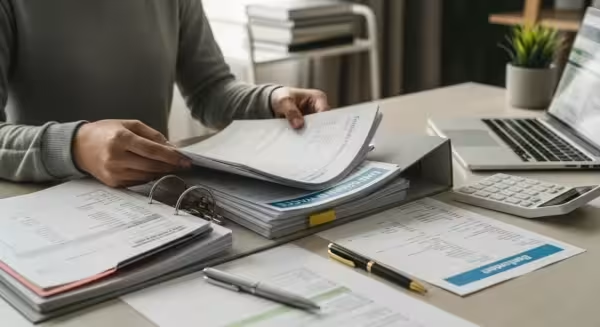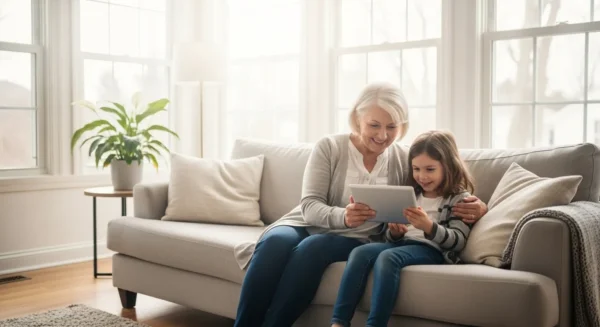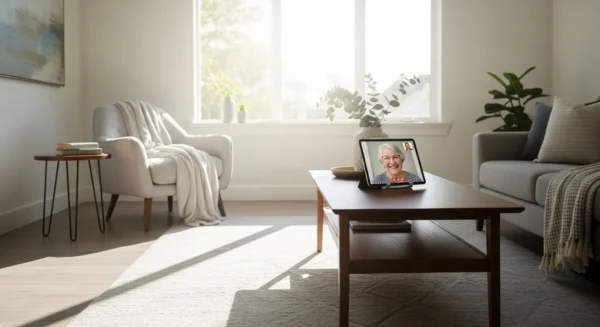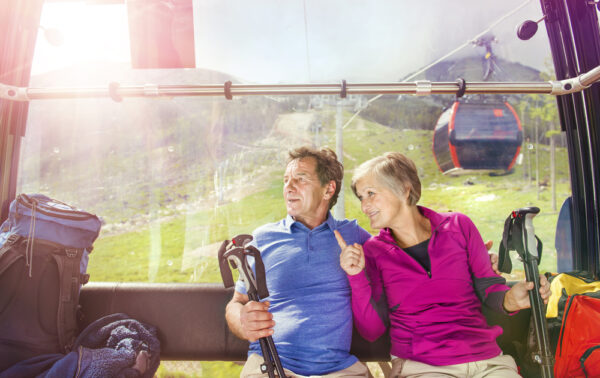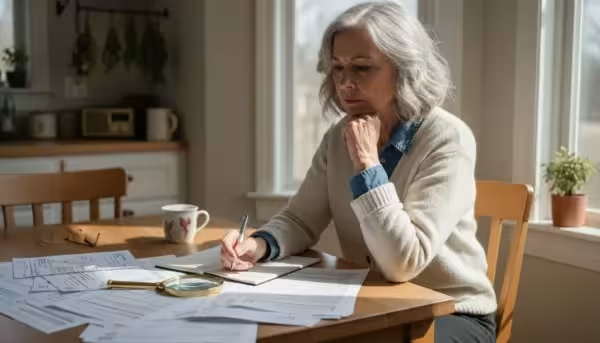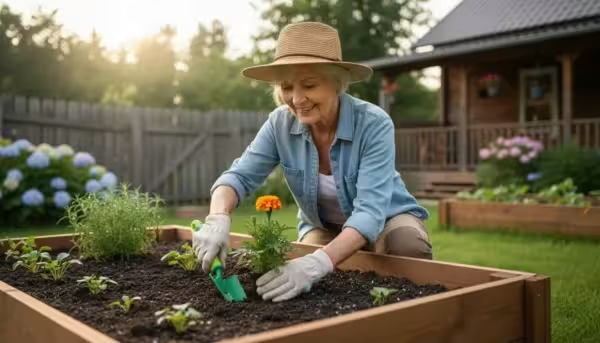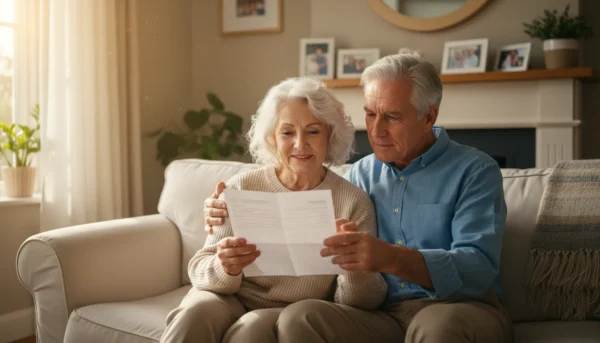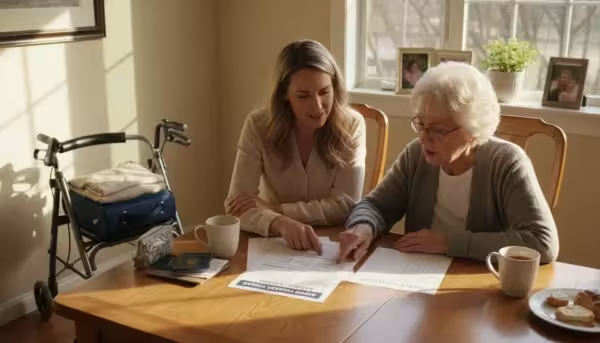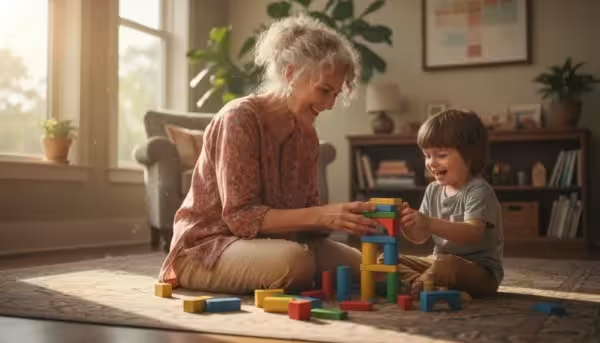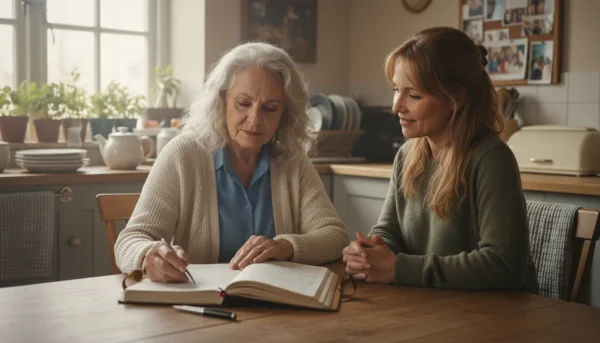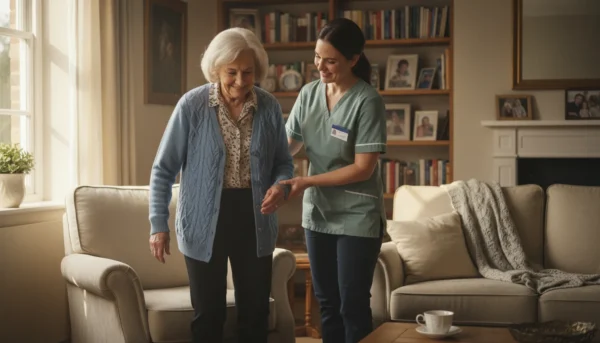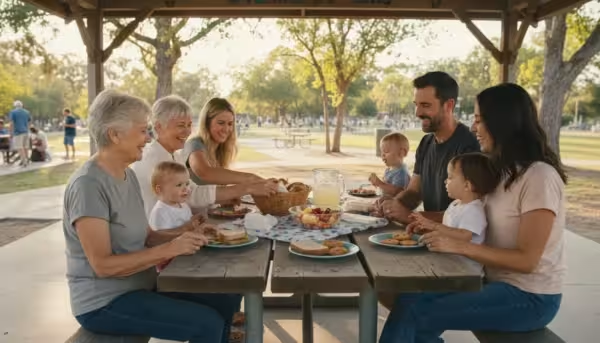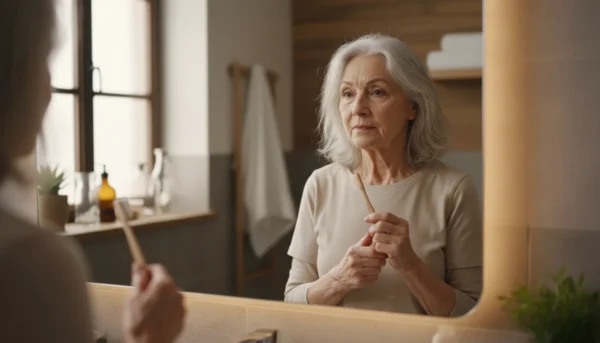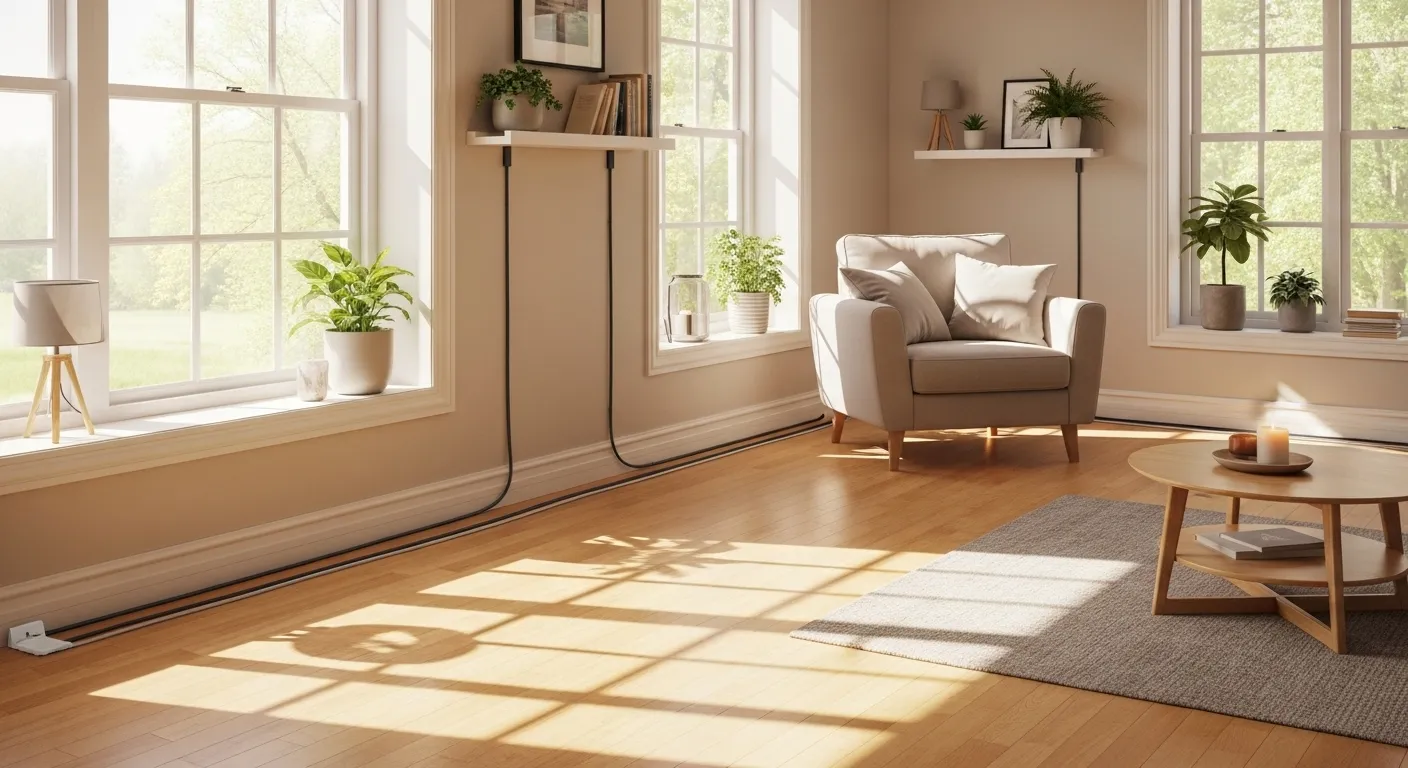
Your home is your sanctuary—a place of comfort, memories, and familiarity. Choosing to live independently is a testament to your strength and spirit, and we believe in empowering you to do so safely and confidently for as long as possible. Maintaining a secure environment is not about limitation; it’s about freedom. The freedom to move through your home with ease, to feel secure in your daily routines, and to focus on the things that bring you joy.
This comprehensive home safety checklist for seniors is designed to be your trusted guide. Think of it as a friendly consultation, walking you through simple yet powerful adjustments you can make in every room. These practical steps can significantly reduce the risk of common household accidents, particularly falls, and help you create a truly senior-proof home.
Let’s walk through your home together and find ways to make it an even safer, more comfortable place to thrive.
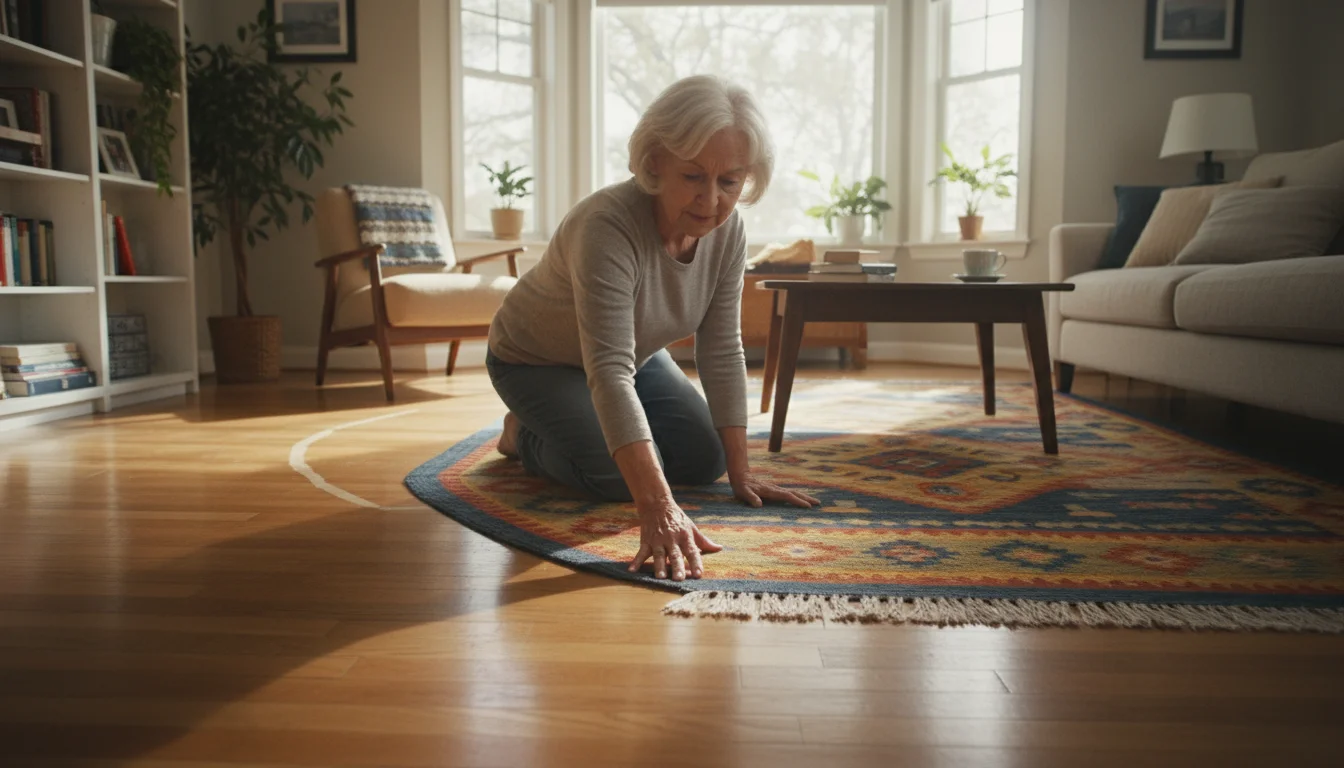
1. Prioritize Fall Prevention in General Living Areas
The ‘Why’: As we age, natural changes in our vision, balance, and even muscle strength can make us more susceptible to tripping and falling. Falls are one of the most significant threats to independent living for older adults. By creating clear, unobstructed pathways, you dramatically reduce this risk and build a foundation for safety throughout your entire home.
The ‘How’:
- Clear the pathways: Take a careful look at the main routes you walk every day—from your bedroom to the kitchen, or the sofa to the front door. Remove any potential tripping hazards like stacks of magazines, loose electrical cords, decorative items on the floor, or stray shoes.
- Secure all rugs: Throw rugs are a major culprit in falls. If you love your rugs, make sure they are firmly secured to the floor with double-sided tape or a non-slip backing. Better yet, consider removing small, loose rugs altogether.
- Manage cords and wires: Reroute electrical and phone cords so they run along the walls, not across walkways. You can use cord covers or clips to keep them tidy and out of the way.
- Check your furniture placement: Ensure there is plenty of space to move around furniture without bumping into corners. Low coffee tables or ottomans can be particularly hazardous, so be mindful of their placement.
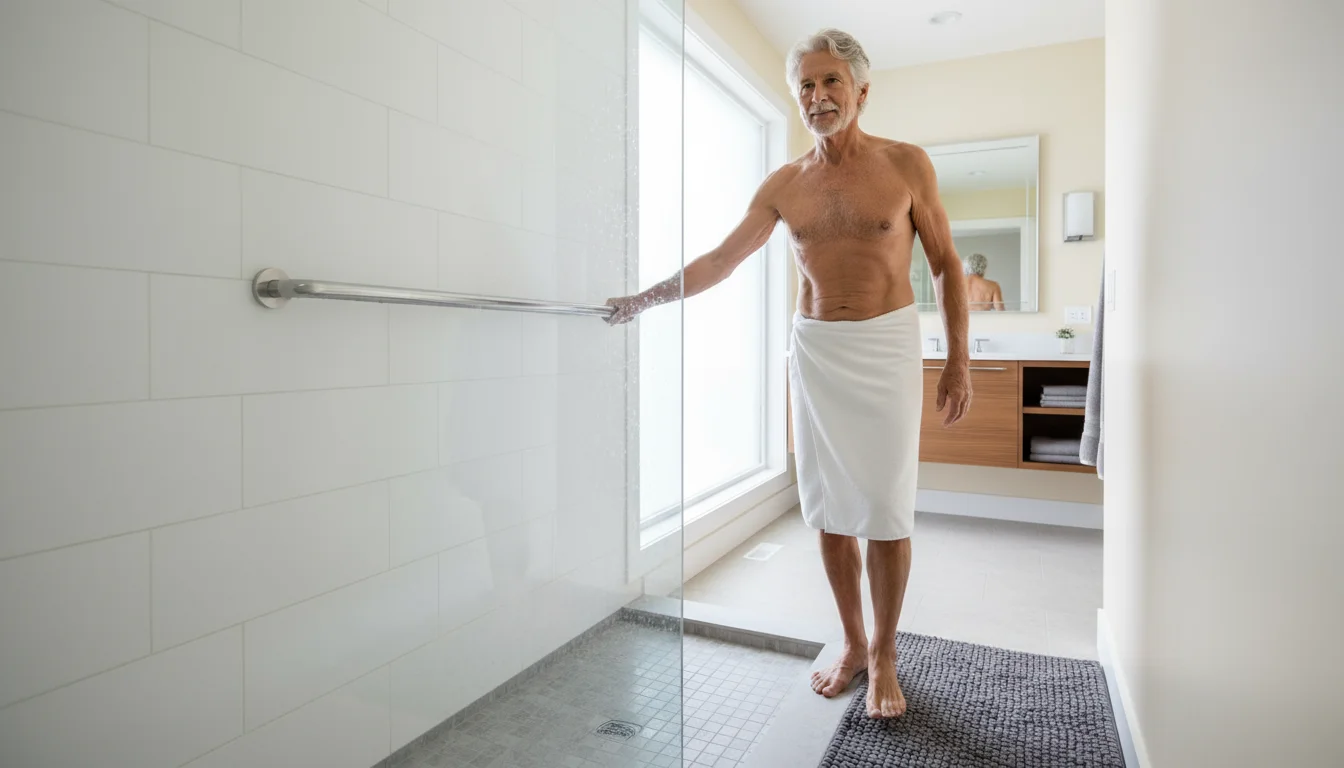
2. Create a Safer Bathroom Environment
The ‘Why’: The combination of hard surfaces and water makes the bathroom one of the most common places for falls to occur. Proactive safety modifications for seniors in this room are not just a good idea—they are essential for preventing serious injury and maintaining your confidence with personal care routines.
The ‘How’:
- Install grab bars: This is the single most important bathroom safety modification. Have sturdy grab bars professionally installed in and around the shower, bathtub, and next to the toilet. Do not rely on towel racks or suction-cup bars, as they are not designed to support your weight.
- Use non-slip surfaces: Place a non-slip mat or apply adhesive safety strips inside your tub or shower. A high-quality, non-slip bath mat with a rubber backing should also be placed on the floor outside the tub.
- Consider a shower chair and handheld showerhead: A sturdy shower chair or bench allows you to sit while bathing, which conserves energy and greatly reduces the risk of slipping. A handheld showerhead makes rinsing off easier and safer while seated.
- Improve toilet safety: If your toilet is low and difficult to get up from, consider installing a raised toilet seat or a toilet safety frame with handles.
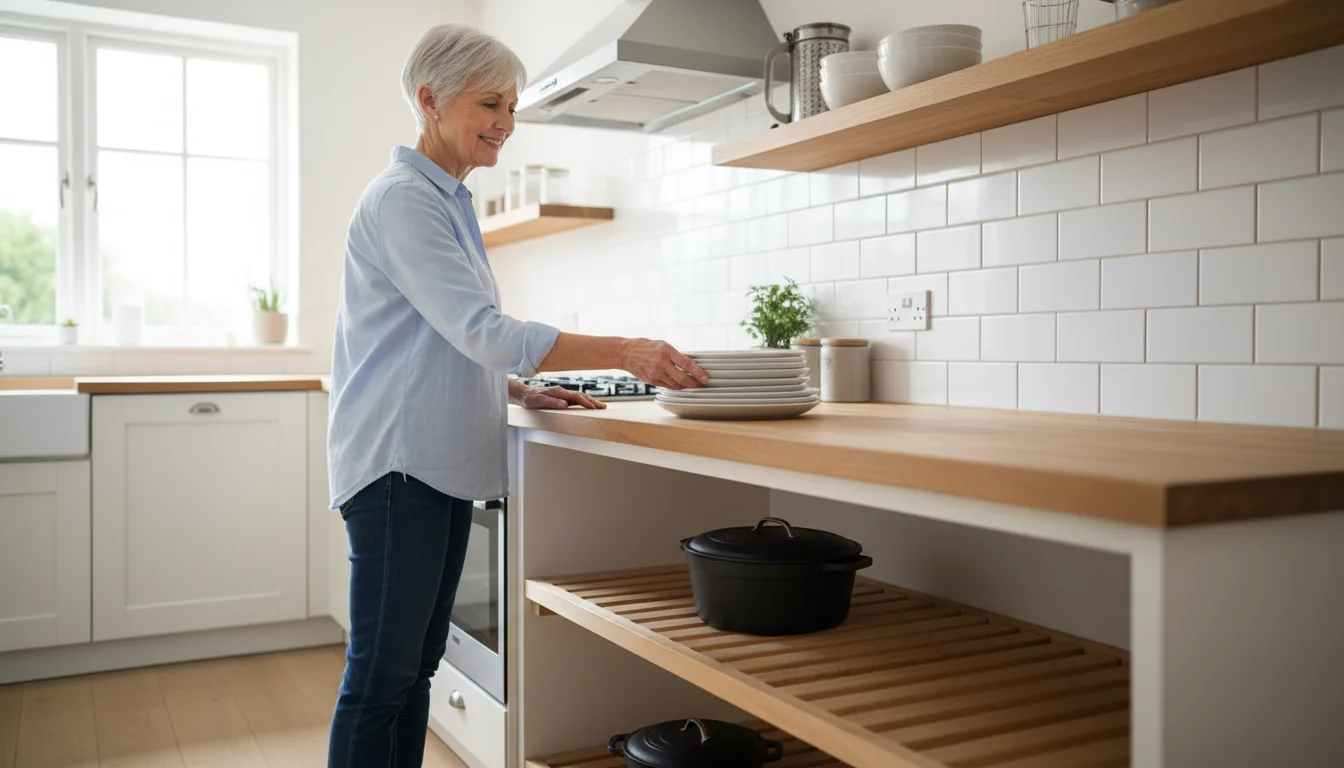
3. Organize the Kitchen for Ease and Safety
The ‘Why’: The kitchen is the heart of the home, but it also presents risks, from burns to strains from reaching or lifting. An organized kitchen that is tailored to your needs makes meal preparation safer, easier, and more enjoyable, reducing physical strain and the risk of accidents.
The ‘How’:
- Keep essentials within easy reach: Rearrange your cupboards so that the items you use every day—dishes, glasses, common ingredients—are on lower shelves between your waist and shoulder height. This prevents you from needing to use a step stool or over-reaching.
- Store heavy items low: Heavy pots, pans, and appliances like mixers should be stored on low shelves or in lower cabinets to avoid lifting heavy objects from overhead.
- Use automatic shut-off appliances: When it’s time to replace small appliances, consider models with an automatic shut-off feature, like coffee makers, electric kettles, or toaster ovens. This provides peace of mind and prevents a fire hazard if you forget to turn them off.
- Clean up spills immediately: Keep paper towels or a cloth handy to wipe up any spills on the floor right away to prevent a slip.
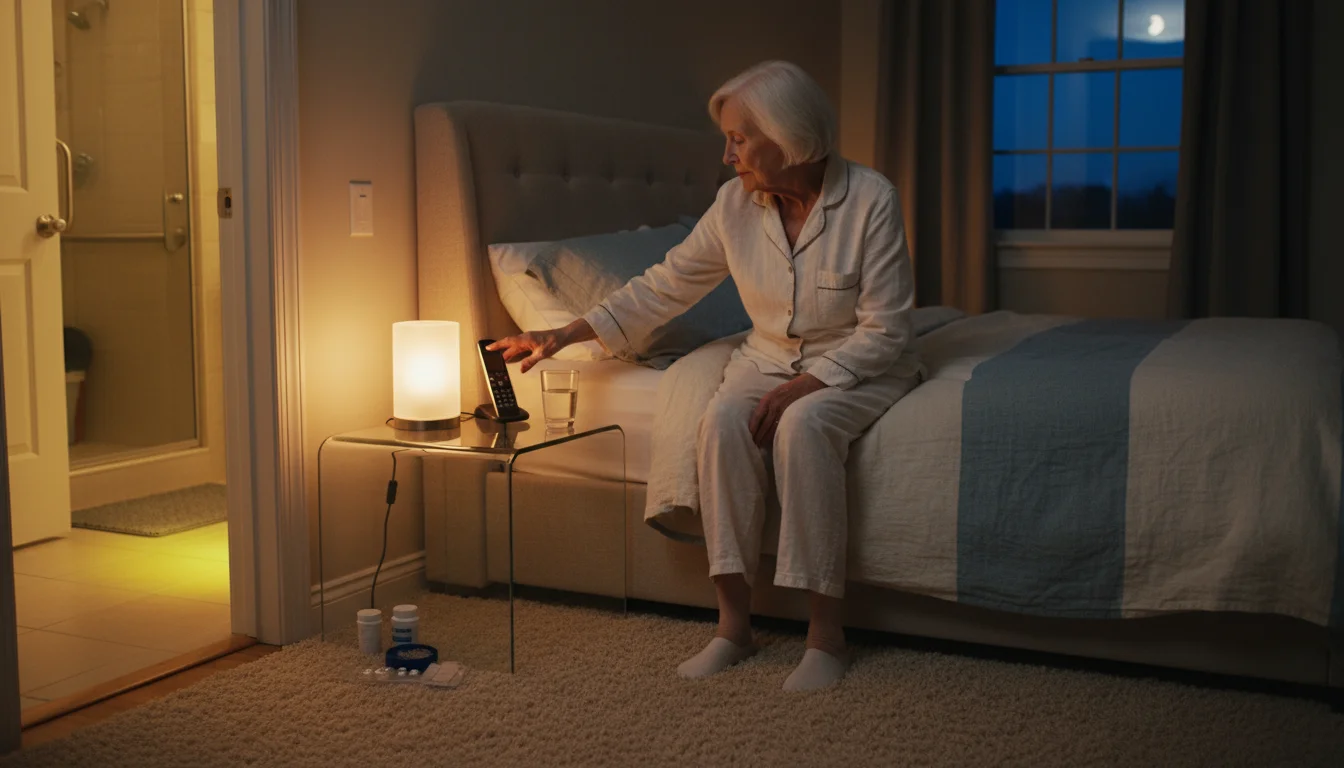
4. Ensure Safe and Peaceful Nights in the Bedroom
The ‘Why’: Many falls happen at night when we are groggy and moving in the dark, often on the way to the bathroom. A few simple adjustments in the bedroom can make these nighttime journeys much safer and help you rest more easily.
The ‘How’:
- Light the way: Place a lamp with an easy-to-reach switch on your nightstand. Consider plugging in automatic, motion-activated nightlights along the path from your bed to the bathroom. This ensures you never have to walk in the dark.
- Keep a phone close by: Always have a telephone within arm’s reach of your bed. A charged cell phone or a cordless landline phone works perfectly. In an emergency, you won’t have to get up to call for help.
- Clear the bedside area: Make sure the area immediately around your bed is free of clutter, cords, or furniture, so you can get in and out of bed without tripping.
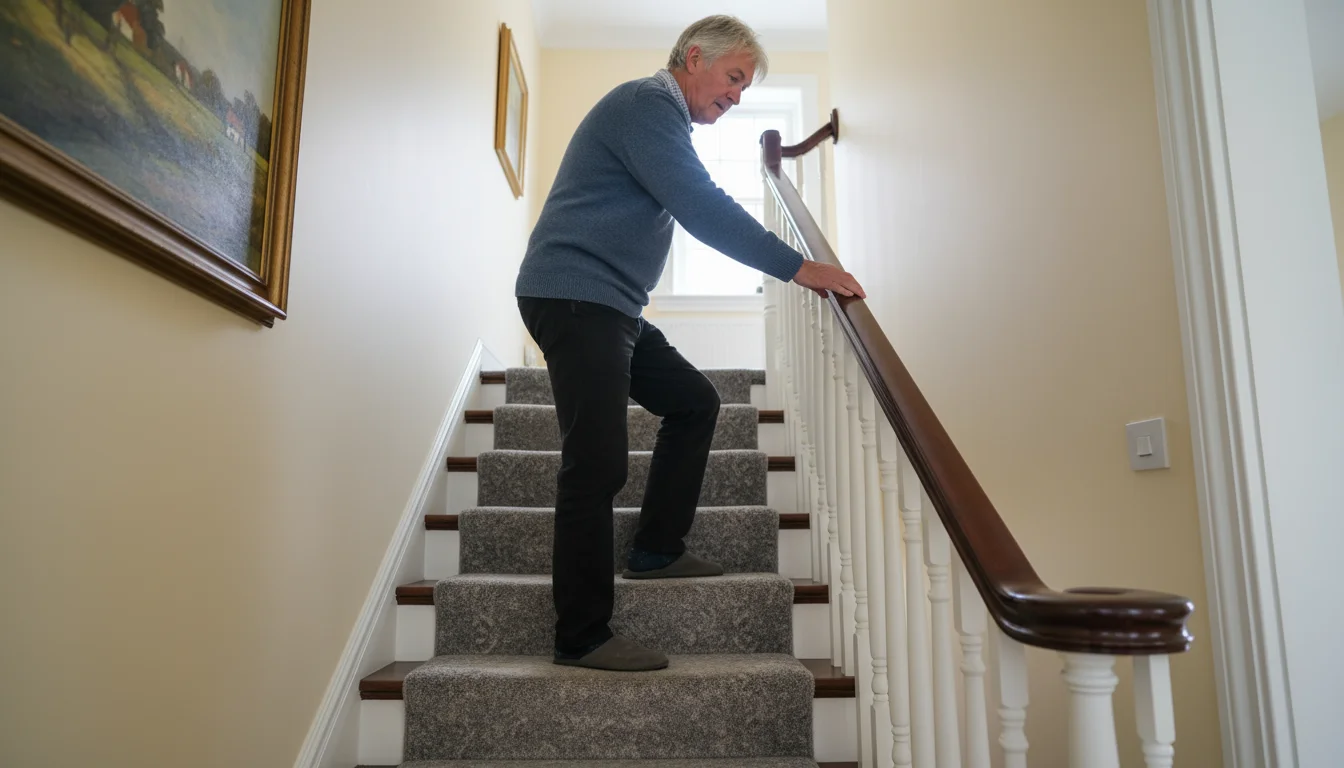
5. Secure All Stairways, Inside and Out
The ‘Why’: Stairs present a clear and significant fall risk, especially if you experience changes in vision, depth perception, or leg strength. Ensuring they are well-lit and properly maintained is a critical part of a comprehensive independent living checklist.
The ‘How’:
- Check handrails: Make sure there are sturdy handrails on both sides of the staircase. Test them to ensure they are not loose and can fully support your weight.
- Improve lighting: Stairs should be brightly lit from top to bottom. Have light switches conveniently located at both the top and bottom of the stairs.
- Ensure steps are clear and visible: Never store items on the stairs. If you have carpet, make sure it is securely fastened. If you have wooden stairs, consider adding non-slip treads to each step to improve grip. You can also use contrasting colored tape on the edge of each step to make it more visible.
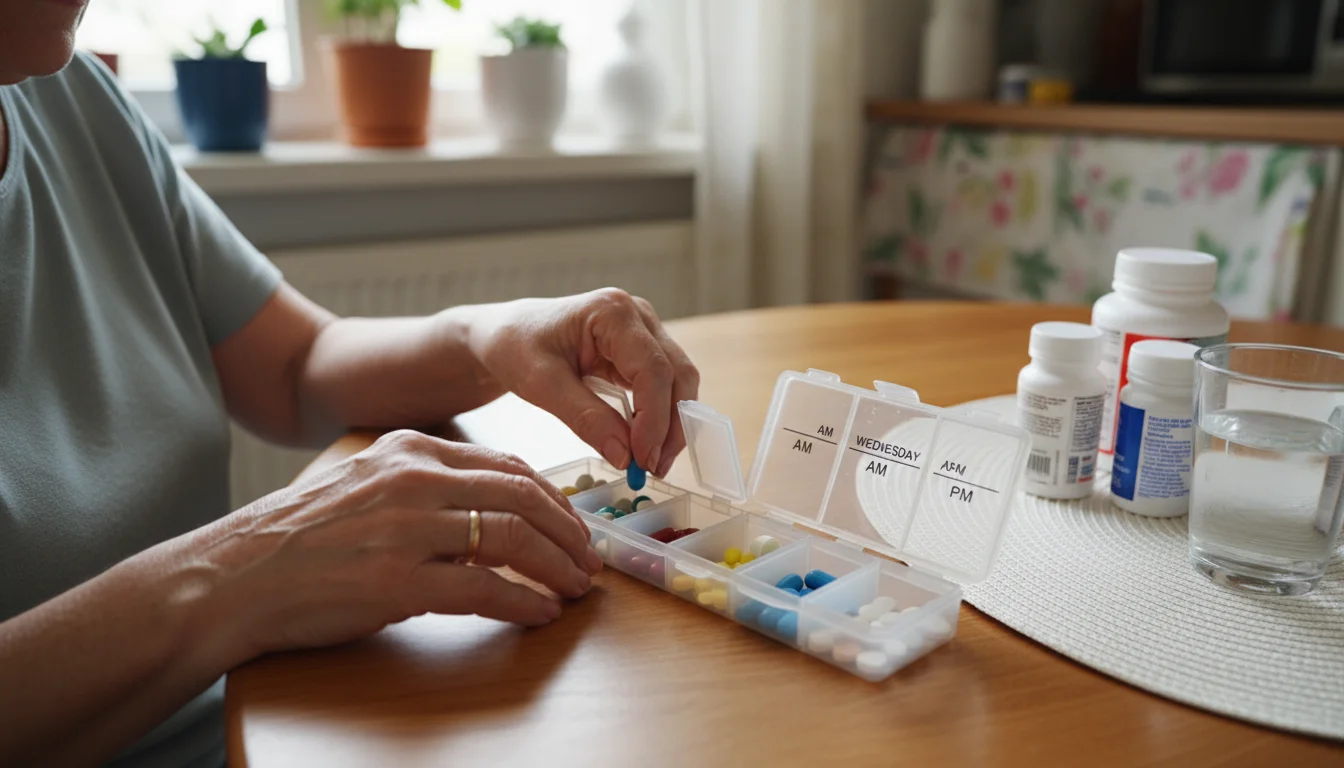
6. Streamline Your Medication Management
The ‘Why’: Home safety isn’t just about the physical environment; it’s also about managing your health correctly. Taking multiple medications can be confusing, and mistakes can lead to serious health issues. A simple, organized system ensures you take the right medication at the right time.
The ‘How’:
- Use a pill organizer: A weekly or monthly pill organizer is an invaluable tool. Take time once a week to fill it, so you can see at a glance if you’ve taken your daily doses.
- Keep an updated medication list: Maintain a current list of all your medications (including prescriptions, over-the-counter drugs, and supplements), dosages, and the reason you take them. Keep a copy in your wallet and another on your refrigerator for emergency responders.
- Ensure good lighting: Store and take your medications in a well-lit area to ensure you can clearly read the labels on the bottles.
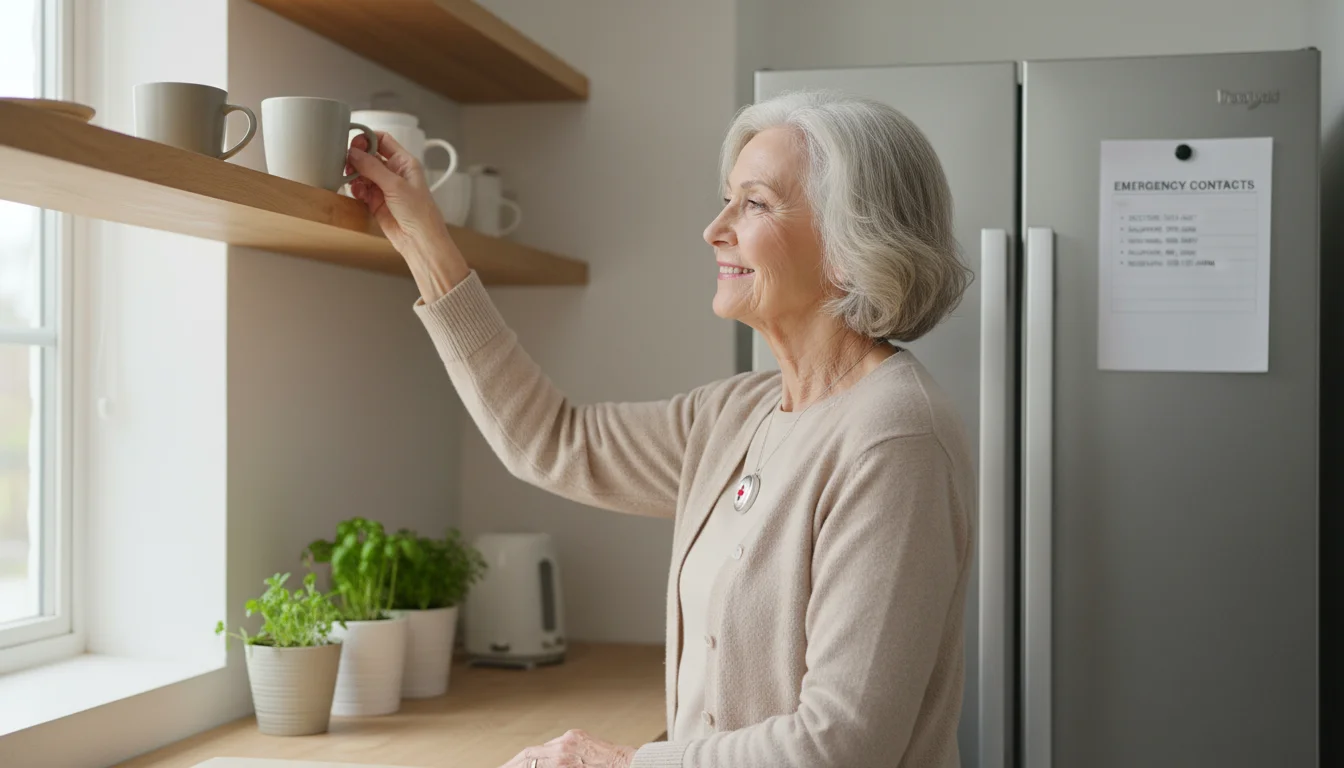
7. Be Prepared for Emergencies
The ‘Why’: Even with the best precautions, emergencies can happen. Having a plan in place provides immense peace of mind for both you and your loved ones. It ensures that if you need help, you can get it quickly.
The ‘How’:
- Keep emergency numbers visible: Post a list of emergency contacts—including family, neighbors, doctors, and poison control—on your refrigerator or near every phone in the house.
- Consider a medical alert system: These systems, often worn as a pendant or bracelet, can be a true lifesaver. With the push of a button, you can connect to a 24/7 call center that can dispatch help for you. This is especially valuable if you live alone.
- Make phones accessible: In addition to your bedside phone, ensure there is an easy-to-reach phone in the main living area and kitchen.
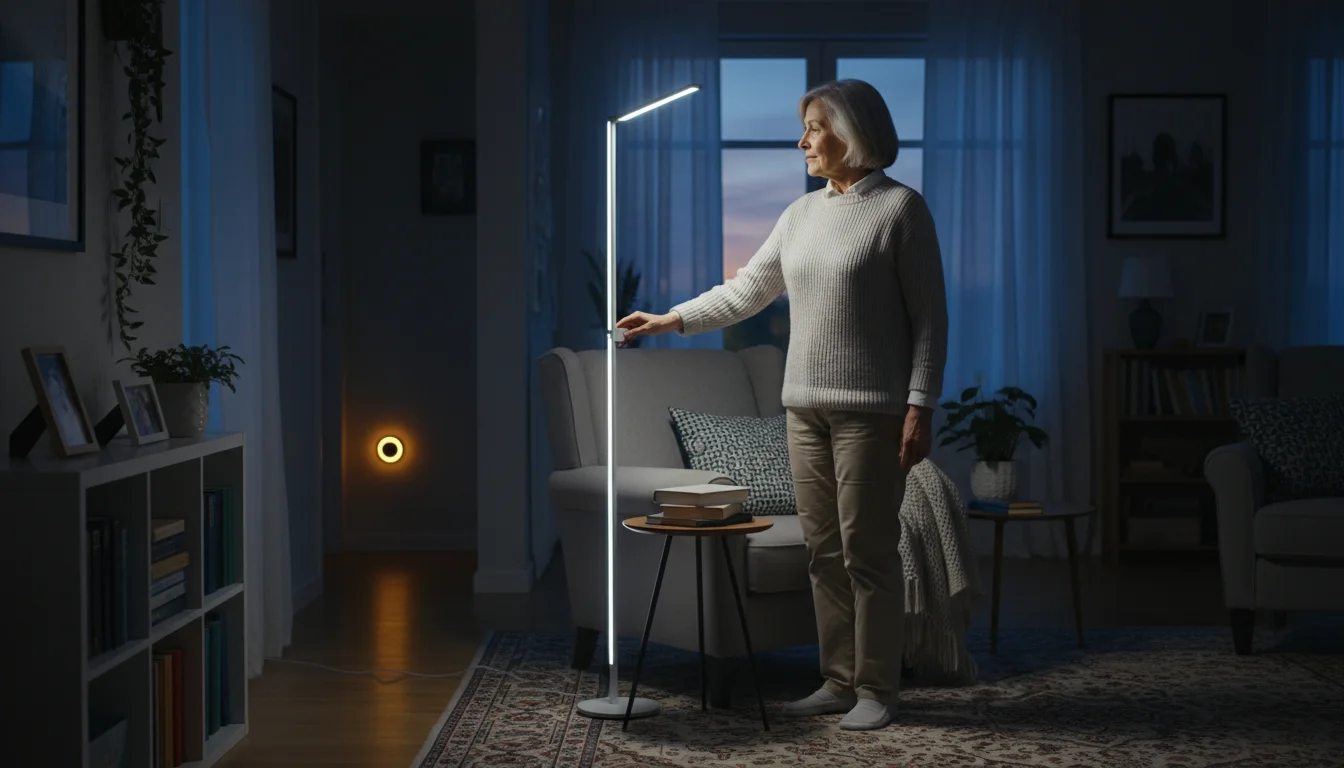
8. Improve Lighting Throughout Your Home
The ‘Why’: Vision naturally changes with age, and we often need more light to see clearly than we did when we were younger. Bright, even lighting is one of the easiest and most effective ways to prevent falls and make your home feel safer and more welcoming.
The ‘How’:
- Use brighter bulbs: Replace lightbulbs with the highest wattage recommended for the fixture. Consider using “daylight” or “cool white” LED bulbs, which provide bright, clear light.
- Add more lamps: Place additional lamps in dark corners or areas where you read or do hobbies.
- Install nightlights: Use plug-in nightlights in hallways, bathrooms, and the kitchen to provide low-level illumination for moving around at night.
- Ensure light switches are accessible: Consider installing illuminated “rocker” style light switches, which are easier to see and use than traditional toggle switches.
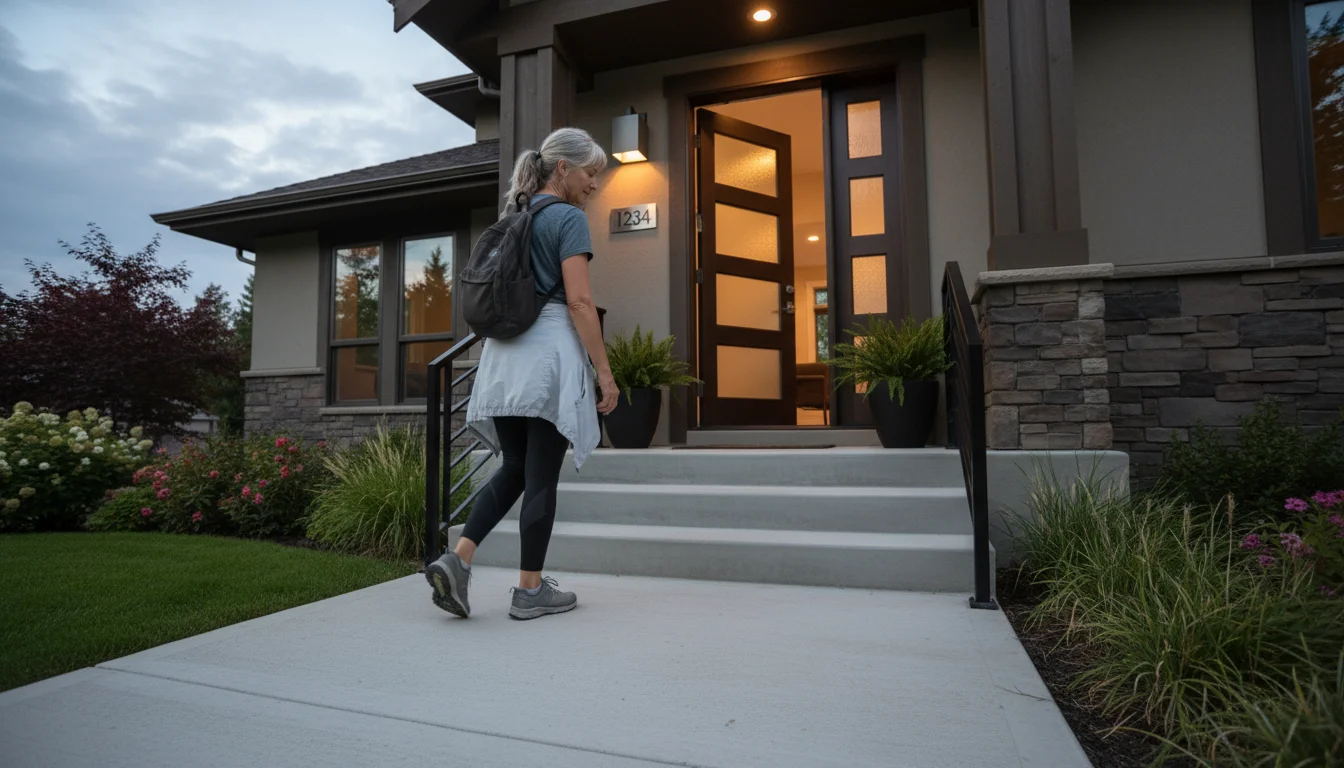
9. Secure Your Entryways and Outdoor Paths
The ‘Why’: Home safety starts before you even walk through the door. Well-maintained entrances, walkways, and porches are your first line of defense against trips and falls, ensuring a safe passage into and out of your home.
The ‘How’:
- Ensure clear, level walkways: Check all outdoor paths for cracks, uneven pavement, or intruding tree roots. Keep them clear of snow, ice, wet leaves, and clutter.
- Secure steps and ramps: If you have outdoor steps, ensure they have a sturdy handrail. If you use a ramp, make sure it has a non-slip surface.
- Brighten your entrances: All outside entrances should have bright lighting. A motion-sensor light near the front door is an excellent security and safety feature.
- Check your locks: Make sure door and window locks are easy for you to operate but are still secure. A deadbolt that is difficult to turn may need to be replaced.
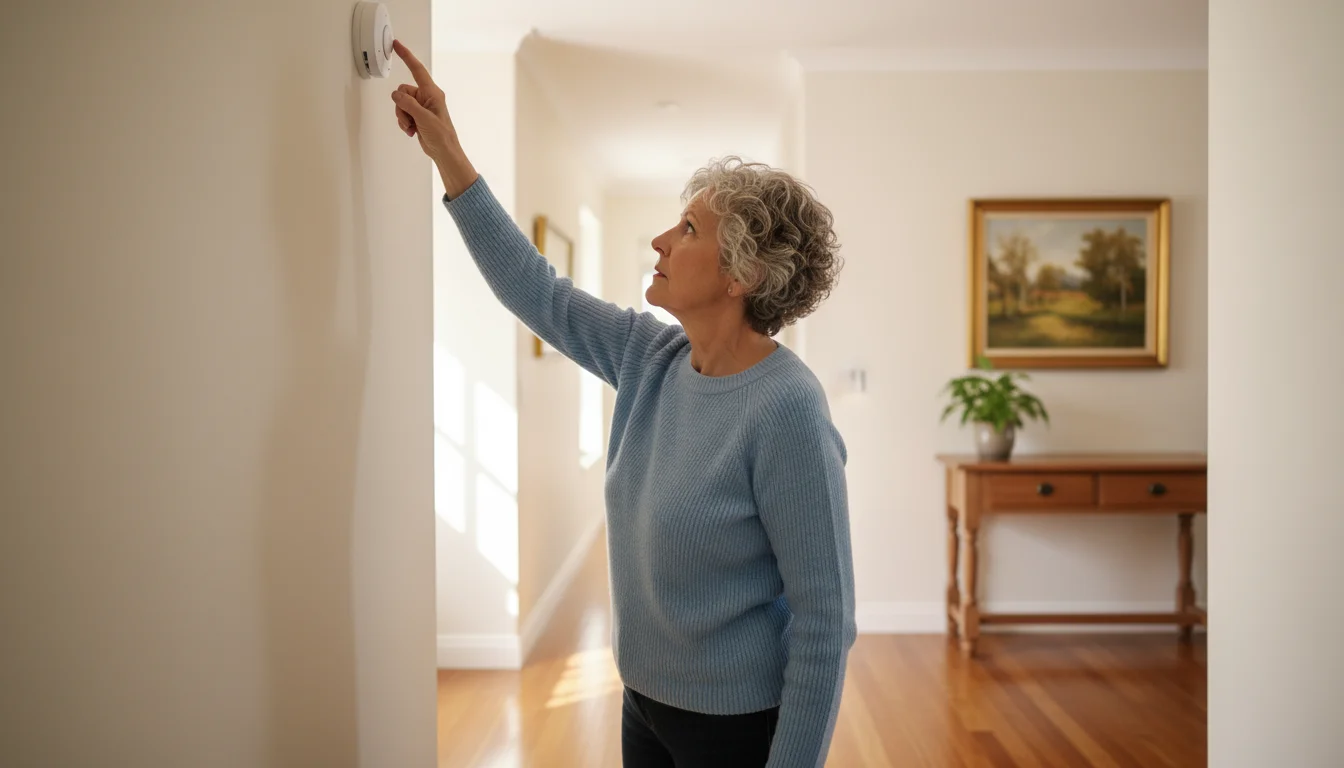
10. Conduct Regular Safety Maintenance Checks
The ‘Why’: A safe home requires a little bit of ongoing attention. Creating a routine for checking key safety devices ensures they will work properly when you need them most, protecting you from invisible threats like fire and carbon monoxide.
The ‘How’:
- Test smoke and carbon monoxide detectors: Test your detectors monthly by pressing the “test” button. Replace the batteries at least once a year—a good habit is to do it when you change your clocks for daylight saving time.
- Have a fire extinguisher: Keep a small, easy-to-use fire extinguisher in the kitchen. Check the pressure gauge regularly and make sure you know how to use it.
- Do a quarterly walk-through: Every few months, use this list to walk through your home and check on all the safety points. This proactive approach helps you catch small issues before they become big problems.
Making your home safer is a powerful act of self-care. It’s about honoring your desire for independence and taking proactive steps to protect your health and well-being. Each small adjustment you make contributes to a larger sense of security and confidence in your own space.
A friendly reminder: This checklist is a guide. For personalized advice, especially when considering renovations like installing grab bars or ramps, please consult with a certified professional or an occupational therapist. And as always, discuss any concerns about your health, balance, or medication with your doctor.
For expert guidance on senior health and finance, visit Alzheimer’s Association, American Heart Association, Benefits.gov and National Institute on Aging (NIA).
|
Fact-Checked Content
Our editorial team reviews all content for accuracy and updates it regularly. Learn about our editorial process →
|

